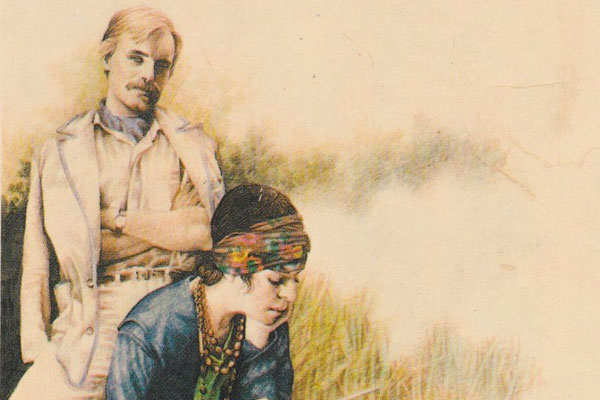Women In Love
Author D.H. Lawrence
The novel centres around two couples: Ursula and her eventual lover Rupert Birkin, and Gudrun (Ursula’s sister) and Gerald Crich (Birkin’s best friend). On a superficial level, you could say that Ursula and Birkin are the happy couple and Gudrun and Crich are the unhappy couple. But that irons out the subtle nuances that Lawrence builds into these four characters and their respective relationships. Ursula and Birkin have more than a few quarrels (the descriptions of which are clearly drawn from Lawrence’s own experiences of marriage), and, significantly, the novel ends with the “happy couple” debating whether they are really enough for one another.
To say Gudrun and Crich are unhappy doesn’t begin to describe how venomous their relationship becomes. It’s both fascinating and repulsive to observe this car crash of a romance. In fact, almost every relationship in the novel defies your expectations of what should be happening within that relationship. Fathers hit their daughters, a girl drags her sweetheart to a watery death, and lovers initially desire each other, then are frightened of each other, then unswervingly hate each other.
Two things stop Women In Love from becoming a soapy melodrama. The first is the general sense of malaise, evoked most frequently and fully through the philosophising of Rupert Birkin. Though Birkin’s rhetoric is mocked later in the book, it’s clear that he is to a certain extent Lawrence’s mouthpiece. Birkin expounds on the soullessness of early twentieth-century Britain and the seeming mechanisation of its society, the emptiness of old idols and the yearning for new ones, and the urgent search for meaning despite the spiritual barrenness of 1920s society which suggests that such meaning no longer exists. In this sense, Women in Love connects with other great artistic and literary works of the time. It is most obviously comparable to The Waste Land, in which T. S. Eliot refers to the cultural achievements of the past as “a heap of broken images” and promises to show the reader “fear in a handful of dust.” Lawrence dramatises this sentiment by putting that fear in his characters’ mouths.
Above all, it’s Lawrence’s prose and incredible skill as a writer that kept pulling me back in. Even when the plot got slow or Birkin’s philosophising got tired or a passage got so complex and rich in verbal nuance that I felt I was floundering in a wordy swamp, all I had to do to recover was turn the page. And on that page there would always be another luminous description or image of intense clarity, detailed in precise and nuanced language and seen through a fresh eye. E.M. Forster described D.H. Lawrence as a “prophetic” author, one “in whom the song predominates, who has the rapt bardic quality”. The beauty of his prose proves this to be true. Anyone with an interest in language and writing will feel invigorated after reading this book. Anyone interested in human nature and relationships will find this book absorbing and sadly truthful. Anyone interested in both will probably be like me and realise halfway through that they already want to read this book again.
–Feby Idrus



